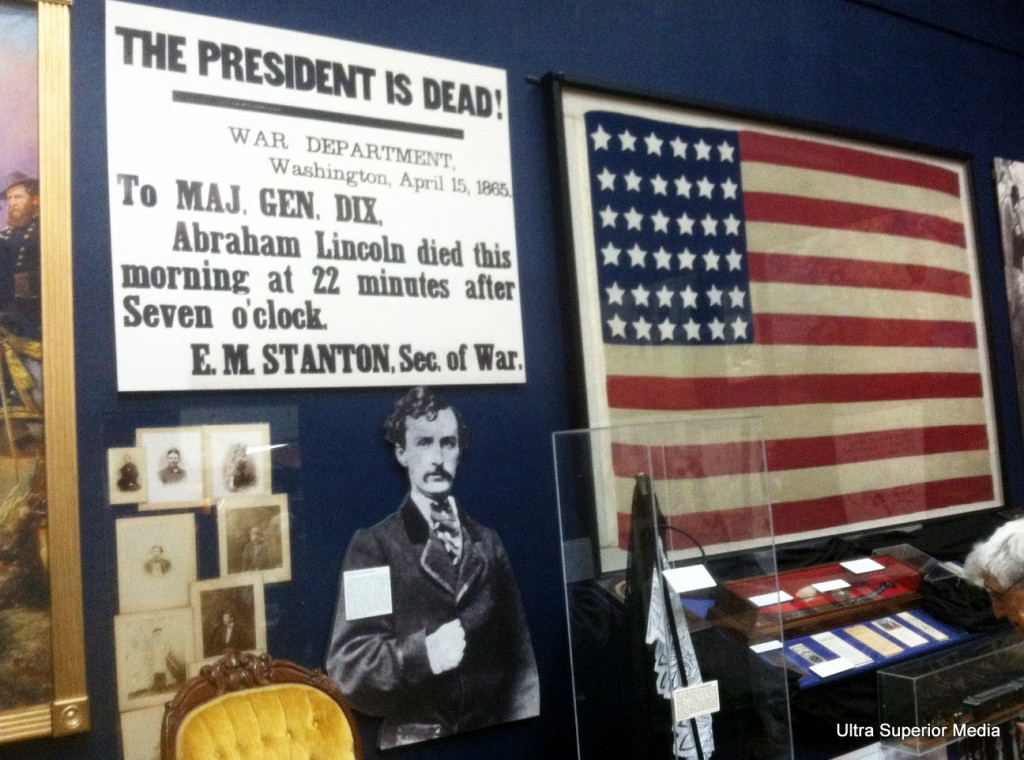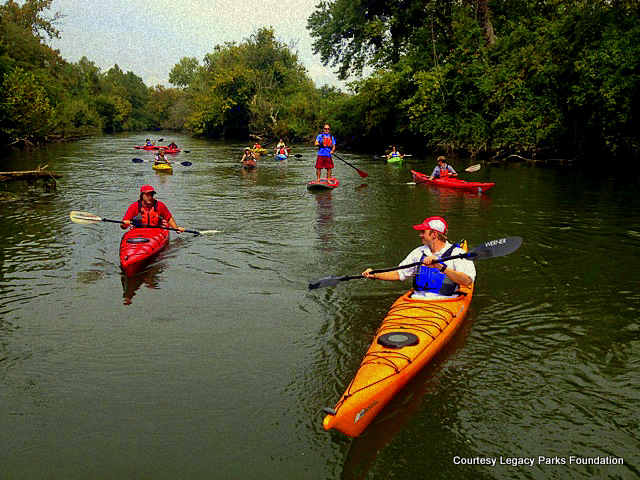Mighty Rivers rise from humble beginnings, often hundreds of miles from their final, stellar display of power as they rumble into a junction downstream. The Tennessee River’s founding ranks as one of the more interesting in river history and recreation.

Under the railroad trestle (left) flows the Holston River. Top Right, here comes the French Broad. To the lower right, two become one in a marriage of water creating the Tennessee River. Burkhart Enterprises, a thriving river port since the late 1940s, docks barges in the photo. See this point from their vantage below
The Confluence and Flow of the Tennessee River
A dozen miles above the vibrant East Tennessee city of Knoxville, two powerful rivers—the Holston and the French Broad—join in a confluence of waters launching the Tennessee River’s 652-mile navigable journey. Included in the flow route lay portions of Alabama until the Tennessee River folds northward creating a wandering “U” shape. Then, near Paducah, Kentucky, the Tennessee River merges with the Ohio River as its largest and equal tributary. However, only for a short 46 miles until the Ohio River converts to a tributary itself for the Mississippi River in Cairo, Illinois.

The Tennessee River from beginning to end. Note the confluence of Holston and French Broad Rivers at the Knoxville “dot” offering hundreds of miles of river fun
When Knoxville reigned as king of the region circa 1790, the river was popularly known as the Cherokee, named as such by the native Indian population. In fact, their influence ultimately yields the name Tennessee from the word “Tanasi,” a Cherokee village. A distinguished monument overlooks the now submerged village, whose name roughly translates to “big bend,” 12 miles south of the town of Vonore.
The French Broad
The French Broad River begins near the small town of Rosman, North Carolina. It flows independently for 213 miles before mixing with the Holston. From Rosman, it carries one of the heavier rainfalls in the United States north through Asheville, North Carolina, before tracking northwest across the Great Smoky Mountains, one of the river’s major water sources.
Great Smoky Mountains National Park is one of the best areas for enjoying the bounty of the French Broad River and the many smaller streams that feed it. Gatlinburg is a notably wonderful base for exploring these waterways with a plethora of outfitters running whitewater rafting, kayaking, and paddleboarding adventure trips. Grab a bag of iconic Gatlinburg taffy then hop on the Pigeon River to experience class III and IV rapids that finish their flow into the French Broad above the Douglas Dam.
The Pigeon River
 Pigeon River, named after the Passenger Pigeon, offers a lesson about that bird’s journey to extinction, something River Sports enthusiasts must keep in mind. While once one of the largest populations on the globe (four billion estimated just in 1700s North America alone), massive hunting for its cheap meat and habitat loss killed the species. Currently, there remain a number of species globally facing the same demise, for instance, the majestic Monarch Butterfly.
Pigeon River, named after the Passenger Pigeon, offers a lesson about that bird’s journey to extinction, something River Sports enthusiasts must keep in mind. While once one of the largest populations on the globe (four billion estimated just in 1700s North America alone), massive hunting for its cheap meat and habitat loss killed the species. Currently, there remain a number of species globally facing the same demise, for instance, the majestic Monarch Butterfly.
The Holston River
The Holston River travels 274 miles to reach the confluence with twin, the French Broad, beginning in Bland County, Virginia. Uniquely, the Holston consists of three forks: the longest and more dominant North Fork flows from Sharon Springs. The “twins” Middle and South Forks converge NE of Bristol, a city straddling the state-lines of Virginia and Tennessee. These combined forks, known now as “South,” later turn NW to greet the North Fork at Kingsport, Tennessee.
Then the three forks combo take off as one for 136 miles SW toward Knoxville. Bays Mountains lays on the south side of the flow nearly all the way. Take time from the canoe, kayak, or paddleboard trip to stop in Kingsport’s Bays Mountain Park. There, among deer and other animals, sits a wolf preserve where one without any moonshine stimulant, howls with the wolves.
River Activities Near Holston
There are winding creeks, lakes, and water galore to explore in the area. Trout fishing with some lunkers (this from knowledgeable sources) remains a favorite in the Holston. Plenty of activity plays in the keeping of the rivers clean.
Panther Creek State Park, as just one suggestion of a park to visit, offers plenty of camping spots and activities to engage time in and out of the water. Sport kayaking, canoeing, and fishing (in and out of canoes and kayaks, too) enjoy the dam’s reservoir. There are also multiple hikes reaching high grounds that once were enjoyed by the Cherokee Indians circa 1785.
Also note Blue Hole Falls on Holston Mountain, so named because of the pool under the falls with a deep blue tint. Located along Mill Creek, the falls are not far from South Holston Lake.
The name Holston River (and the mountain also) derived from Stephen Holstein. He settled in the northerly part of the river in the mid-1700s. Keep an eye out on the Holston Mountain for Holston High Point where the FAA maintains an aircraft beacon at 4,260 feet.
Cherokee Dam, named after the Native American tribe of East Tennessee, marks a key feature on the Holston waterway for river sport craft of all kinds in Grainger County and Jefferson County. Nothing better as Grainger grows the country’s best tomatoes from lush farmland. Use them for your favorite BLT blend. Or just eat one like an orange.
Other Activities in Holston
Better still, be at their world-famous Tomato Festival in late July; a perfect time once you find parking to prove your tomato-throwing skills.

Grainger County Tomato Festival reigns as the king of anything tomato. Join the famous tomato wars on the last Saturday of July. Oh . . . be brave; wear a white shirt.
Most do not know the area opposed secession by the state in Civil War days. President Lincoln’s railroad bridge-burning strategy, including one at nearby Strawberry Plains, was a plan to combat Confederates that Tennessee joined in 1861. However, it seemed to lead to more recruits for both sides of that dastardly conflict. Not far away one can enjoy Lincoln Memorial University’s Abraham Lincoln exhibit hall with important artifacts of his life, like a large copy of the wire announcing his death.

The telegram of President Abraham Lincoln’s death 7:22 a.m., April 15, 1865. Photo taken at the Lincoln Memorial University Museum, Harrogate, Tennessee.
Sadly, that day is now lost among one of the most difficult days of the year for most Americans: April 15, Tax Day (see photo). That day needs changing to say, April 30 or any other day for that matter. Lincoln’s day-of-death should not be lost among a scramble for deductions and paperwork. April 15 needs recognition as a day of honor.
Overall: A River Sport Dreamland
The Tennessee River has North Carolina and Virginia to thank for its origin . . . and the tremendous variety of water sports the Holston River and the French Broad River offer.
Just think: nearly 500 miles from these two rivers, combine with the 652 miles traveled by the Tennessee River to the mouth of the Ohio River. The many tributaries and contributing rivers such as the Little Tennessee and Tellico near Knoxville, make this region a river sport dreamland.
In May, an annual paddleboard race starts in Knoxville on the Tennessee River and races downstream for multiple distances. No longer are such events just the providence of hidden streams and small rivers. The explosion of self-propelled river sports incorporates all good waterways. Just remember Lincoln’s adage, though: “It is best not to swap horses while crossing the river.” Kayaks, canoes and other watercraft, too.
Phillip@ultrasuperior.com







Follow us for the latest news!